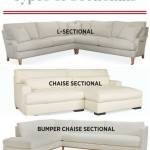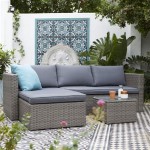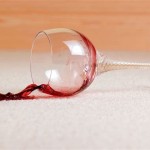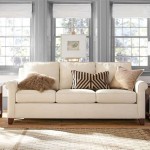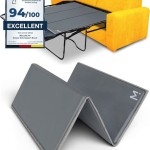What Height Should Sofa Table Lamps Be?
Selecting the appropriate height for sofa table lamps is crucial for achieving balanced aesthetics and optimal functionality within a living space. The height of these lamps directly impacts the overall ambiance, the effectiveness of task lighting, and the visual harmony of the room. Determining the ideal height necessitates careful consideration of several factors, including the height of the sofa, the scale of the side table, and the intended purpose of the lamp. Incorrectly sized lamps can lead to unbalanced proportions, inadequate lighting, and ultimately, a less inviting and functional living area.
The primary function of a sofa table lamp is to provide both ambient and task lighting. Ambient lighting sets the mood and fills the room with a soft, diffused glow. Task lighting, on the other hand, provides focused illumination for activities such as reading, writing, or other close work. The height of the lamp dictates how effectively it can fulfill these roles. A lamp that is too short may not provide sufficient light for reading, while a lamp that is too tall may create glare and disrupt the overall visual balance of the room. Therefore, a thoughtful approach to lamp height selection is essential.
Key Considerations for Determining Sofa Table Lamp Height
Several factors influence the ideal height for sofa table lamps. Taking these into account will assist in selecting lamps that enhance both the function and the aesthetic of the space.
Height of the Sofa: The height of the sofa is perhaps the most critical factor to consider. The bottom of the lampshade should typically be positioned at eye level when seated on the sofa. This ensures that the light source is not directly visible, which can cause glare and discomfort. A general guideline is that the bottom of the lampshade should be approximately 17 to 20 inches above the sofa seat. This range may need to be adjusted slightly depending on the height of the individuals who will be using the sofa most frequently. To accurately determine the optimal height, it is advisable to have someone sit on the sofa while another person holds a tape measure to simulate the lampshade's placement. This process allows for a more personalized and precise measurement.
Furthermore, consider the style of the sofa. A low-slung, modern sofa may require a shorter lamp to maintain visual balance, while a taller, more traditional sofa may necessitate a taller lamp. The goal is to create a sense of proportion and harmony between the sofa and the lamps. The arm height of the sofa is also a factor. Lamps should at least clear the sofa arm so the light isn't blocked. This ensures comfortable reading and prevents the light from being obscured.
Height of the Side Table: The height of the side table is another crucial factor that contributes to the overall height of the lamp. A taller side table will naturally require a shorter lamp, while a shorter side table will necessitate a taller lamp. The goal is to achieve a combined height that positions the bottom of the lampshade at the recommended eye level when seated on the sofa. A common guideline is to ensure that the combined height of the table and lamp falls within a range of 58 to 64 inches. This range is a starting point, and the ideal height may need to be adjusted based on individual preferences and the specific dimensions of the sofa and side table.
The style of the side table should also be taken into account. A slim, modern side table may look best with a lamp that has a sleek, minimalist design, while a more ornate side table may complement a lamp with a more decorative base. The materials of the table and lamp should also be considered to create a cohesive and harmonious look. For example, a wooden side table may pair well with a lamp with a ceramic or metal base, while a glass side table may complement a lamp with a clear or transparent base.
Intended Use of the Lamp: The intended use of the lamp will also influence the ideal height. If the lamp is primarily intended for reading, it should be positioned to provide direct and focused light on the reading material. This may require a slightly taller lamp or a lamp with an adjustable arm. Conversely, if the lamp is primarily intended for ambient lighting, a shorter lamp with a wider lampshade may be more appropriate. This will create a softer, more diffused glow that fills the room without being overly bright or harsh.
In situations where the lamp is intended for both task and ambient lighting, selecting a lamp with a three-way switch can offer added flexibility. This allows for adjusting the brightness of the lamp to suit different needs and activities. A dimmer switch can also be a beneficial addition, allowing for precise control over the light level. Additionally, consider the type of light bulb being used. LED bulbs are energy-efficient and long-lasting, and they are available in a variety of color temperatures to suit different preferences. A warmer color temperature (around 2700K) is typically preferred for ambient lighting, while a cooler color temperature (around 4000K) may be more suitable for task lighting.
Practical Tips for Choosing the Right Height
Beyond the core considerations, some practical tips can help narrow down the selection and ensure you choose the best height.
Measure Everything: Before beginning the search for sofa table lamps, measure the height of the sofa, the height of the side table, and the eye level when seated on the sofa. This information will serve as a baseline for determining the ideal lamp height. Accurate measurements are essential for avoiding costly mistakes and ensuring that the lamps fit seamlessly into the existing space.
Consider the Lampshade: The size and shape of the lampshade also play a role in the overall height and appearance of the lamp. A shorter lamp with a large lampshade may appear disproportionate, while a taller lamp with a small lampshade may look unbalanced. The lampshade should complement the base of the lamp and the style of the surrounding furniture. In general, the width of the lampshade should be approximately one-third to one-half of the total height of the lamp. The shape of the lampshade can also influence the direction and intensity of the light. A drum shade will typically provide a more diffused light, while a conical shade will direct the light downwards.
Test Before Buying: If possible, test the lamp in the intended space before making a purchase. This can be done by borrowing a similar lamp from a friend or family member or by taking advantage of a store's return policy. Place the lamp on the side table and sit on the sofa to evaluate the height and the quality of the light. Pay attention to whether the light is too bright, too dim, or just right. Also, consider how the lamp looks from different angles in the room. This real-world assessment will provide valuable insights that cannot be gleaned from simply looking at measurements or pictures.
Common Mistakes to Avoid
Avoiding common errors guarantees a successful lamp height selection process.
Choosing Lamps That Are Too Short: Lamps that are too short will not provide sufficient light for reading or other tasks, and they can also make the side table look cluttered and unorganized. A lamp that is too short may also be easily knocked over, particularly if there are children or pets in the home. To avoid this mistake, always measure the height of the sofa and side table before selecting a lamp.
Choosing Lamps That Are Too Tall: Lamps that are too tall can create glare and disrupt the overall visual balance of the room. A lamp that is too tall may also be difficult to reach and operate. In addition, excessively tall lamps can make a room feel smaller and less inviting. To avoid this mistake, make sure that the bottom of the lampshade is positioned at eye level when seated on the sofa.
Ignoring the Style of the Room: The style of the lamp should complement the overall style of the room. A modern lamp may look out of place in a traditional setting, and vice versa. Consider the colors, materials, and textures of the existing furniture and décor when selecting a lamp. Aim for a cohesive and harmonious look that enhances the overall aesthetic of the space. If unsure, opting for a classic design or consulting with an interior design professional can be beneficial.
By carefully considering these factors and following the practical tips outlined above, individuals can successfully select sofa table lamps that are both functional and aesthetically pleasing, enhancing the overall ambiance and utility of their living spaces.

How To Choose The Correct Lamp Size Guide Front Door

30 Table Lamps Sources What Size To Get Laurel Home

The Definitive Guide To Table Lamps Lighting Company

How To Add Lighting Your Living Room Using Table Lamps La Z Boy Of Ottawa Kingston

How To Add Lighting Your Living Room Using Table Lamps La Z Boy Of Ottawa Kingston

How To Add Lighting Your Living Room Using Table Lamps La Z Boy Of Ottawa Kingston

Lighting It Right How To Choose The Perfect Table Lamp Decoist

Possini Euro Design Cosgrove Modern Mid Century Table Lamp 26 1 2 High White Glazed Ceramic Light Brown Linen Drum Shade For Bedroom Living Room Home Com

Exeter 30 High Wood Finish Table Lamps Set Of 2 3r187 Plus

Contemporary Table Lamps Can Brighten Your Day
Related Posts

